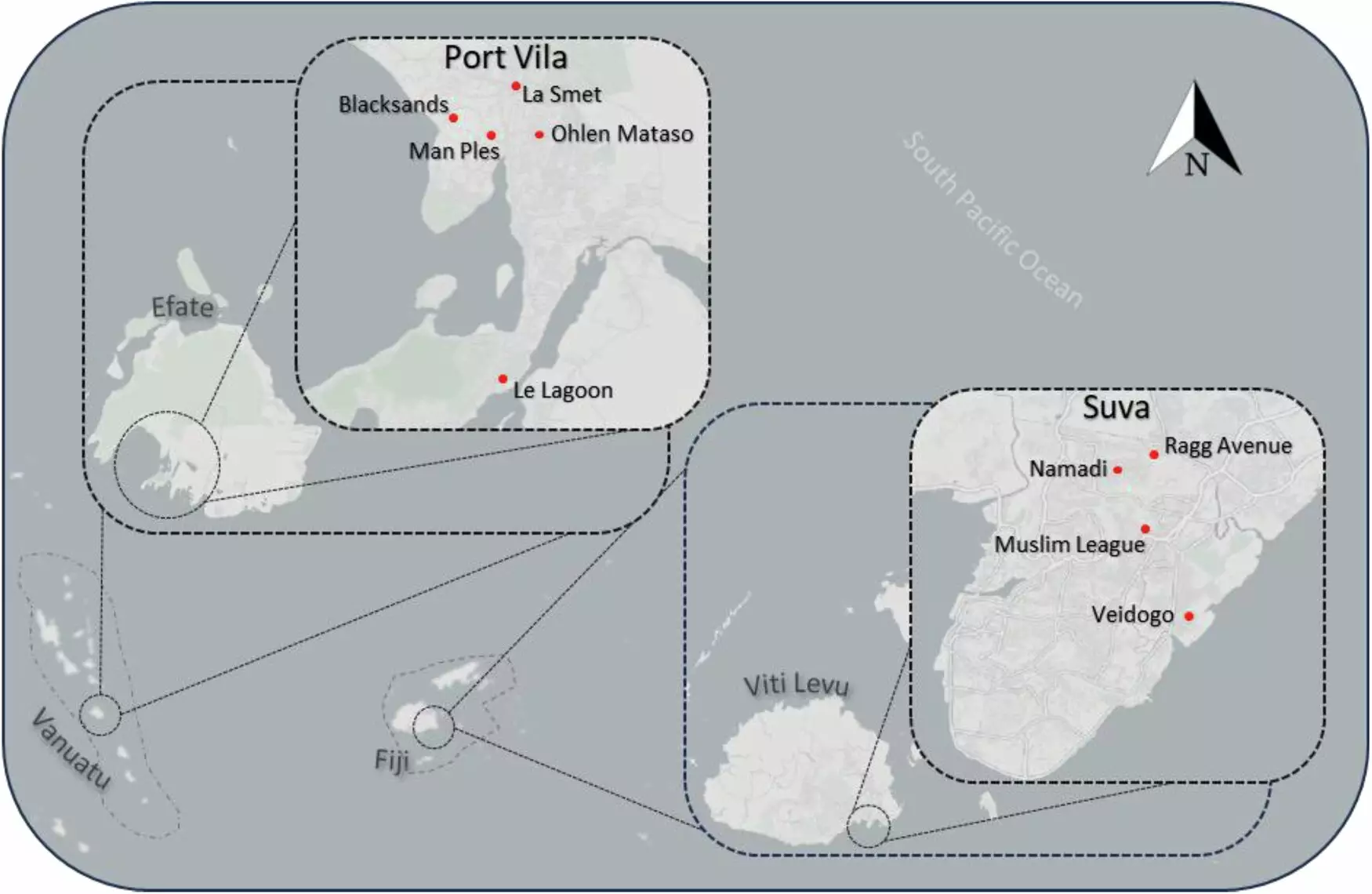

The Pacific Islands, often romanticized in travel brochures as idyllic havens with stunning vistas and tranquil beaches, mask a glaring public health crisis that endangers many of their residents. Behind the postcard-perfect images lies a sobering reality: nearly half a million individuals across this stunning region reside in informal urban settlements. These communities face critical challenges related to sanitation, with many lacking access to basic hygiene facilities like functioning toilets. This issue profoundly impacts various demographic groups, particularly marginalized populations like women, children, seniors, and individuals with disabilities.
Our comprehensive investigation into the sanitation situation in Fiji and Vanuatu highlights the urgent need for targeted interventions. By collaborating with researchers from the University of the South Pacific, we meticulously assessed sanitation infrastructure and surveyed households across nine informal urban locations in Suva and Port Vila, the capitals of Fiji and Vanuatu respectively. Our analysis of 393 households unveiled shocking realities that demand immediate attention.
Informal settlements typically arise when individuals occupy land without governmental permission, often spurred by a severe lack of affordable housing options. This unregulated growth leads to communities that significantly lack essential services and infrastructure, including effective waste management systems, reliable power, paved roads, and garbage collection. Although piped water might be available in these locations, our findings indicated that an alarming percentage of households—ranging from 56% to an unsettling 100%—still rely on unsafe methods for human waste management. Many resort to makeshift dry pits or cesspits that do not incorporate plumbing or running water for flushing. Consequently, the human waste generated by these households remains trapped within their communities, exacerbating health and environmental hazards.
Moreover, the vulnerability of these sanitation systems is especially apparent during severe weather events. For instance, our study uncovered that about one-third of these households are left without functioning toilets during heavy rainfall or cyclones. The risk of damage to dry pit systems is four to eight times higher than that endured by water-based systems, leaving residents in a precarious situation during adverse climate conditions.
The ramifications of inadequate sanitation extend far beyond discomfort and inconvenience; they pose serious public health dangers. Communities are severely affected by the proliferation of diseases such as diarrhea, intestinal worms, and trachoma—conditions that can lead to substantial mortality, particularly among children. According to the World Health Organization and UNICEF, while under 3% of urban dwellers in these Pacific nations reportedly use unsafe sanitation systems, our findings starkly contrast this statistic, revealing that vast numbers of households in informal settlements are reliant on poorly managed sanitation facilities.
The lack of effective waste management systems leads to entirely preventable scenarios such as the dumping of hazardous sludge on open land or into local waterways, resulting in environmental pollution. This contamination endangers water sources, increases the risk of disease transmission, and places extra strain on already vulnerable communities.
Addressing the sanitation crisis in the Pacific Islands necessitates a multifaceted approach that transcends merely installing toilets. It is essential to develop a holistic sanitation service chain that guarantees reliable supervision, waste treatment, and disposal—preferably resilient to the increasingly common climate events impacting this region.
Central to this initiative is the need to elevate local capacities and support the provision of adequate services. Given the unique challenges posed by insecure land ownership and inadequate infrastructure in informal settlements, it is vital for service providers to navigate these complexities skillfully. Implementing innovative strategies that promote community participation and ownership can ensure not only the success but the sustainability of sanitation solutions over time.
As the sixth sustainable development goal emphasizes the vital importance of clean water and sanitation for all, it is imperative to confront the sanitation crisis in the Pacific Islands. By safeguarding the health and dignity of vulnerable populations, we can empower communities to thrive even in an era marked by uncertainty and climate challenges. Fulfilling this objective goes beyond merely improving sanitation infrastructure; it is a critical endeavor to uphold the rights and well-being of those who call these paradisiacal islands home.
Foreign direct investment (FDI) in developing nations has long been heralded as a path to…
As spring beckons in April and May, stargazers have the unique opportunity to witness nature's…
Active matter, a term that refers to systems where individual components can consume energy to…
In a groundbreaking development, a research team led by Prof. Chen Changlun at the Hefei…
The inevitability of aging is experienced differently across individuals, influenced by a complex interplay of…
When we delve into the cataclysmic events that led to the destruction of Pompeii almost…
This website uses cookies.